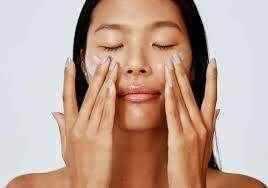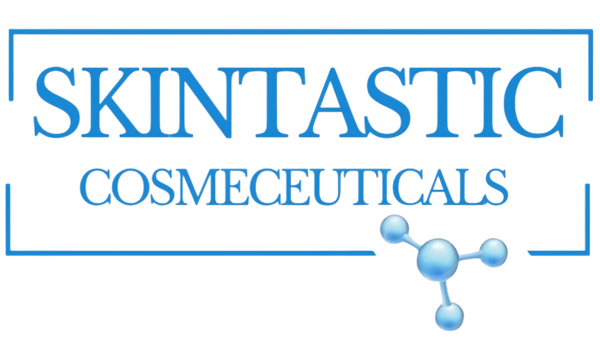
How to Use Retinoids for Wrinkle Treatment Effectively
Retinoids are one of the most widely researched ingredients for caring for maturing skin. Given this, it’s no surprise that this class of vitamin A derivatives is often touted as the gold standard for reducing the appearance of fine lines, wrinkles, large pores, and more. But before you head to your local drugstore, it’s important to understand how retinoids work and which retinoids are best suited for your skin care goals.
What are retinoids?
Retinoids are vitamin A derivatives that not only help reduce the signs of natural aging, but can also help repair sun damage on the skin. There are many different types of retinoids available — from over-the-counter to prescription strength in topical and oral medication form. Retinoids not only reverse the signs of natural aging, but they can also repair sun damage on the skin.
Retinoids have been shown to reduce the appearance of fine lines and wrinkles, smooth the skin and even the tone. Retinol, retinyl palmitate and retinoic acid are all types of retinoids.
How do retinoids work?
Retinoids work by neutralizing free radicals in the skin that may be causing collagen damage. They can also enhance skin shedding and reduce inflammation.
What are free radicals?
It’s a complicated scientific concept, but it helps to understand that free radicals are basically unstable molecules that cause damage to our skin cells. It’s difficult to avoid free radicals, as they can be naturally produced in the body and they can also be caused by exposure to toxins, environmental pollution, and ultraviolet light exposure. Retinoids also increase cell turnover in the skin, making way for new cell growth.
According to an older but well-cited 2006 study Trusted Source, they can boost the production of hyaluronic acid and collagen in the skin and reduce the breakdown of collagen that already exists in the skin. Collagen is essential to strong, youthful-looking skin.
As you mature, your body begins to produce less collagen and elastin. Your body also begins to break down your collagen, elastin, and fat stores. This can contribute to thin and sagging skin, fine lines, and wrinkles. In addition to preserving your collagen stores, retinoids can also promote new collagen production. This may help “fill in” or reduce the appearance of existing wrinkles and help prevent new ones from forming.
You may also see improvements in: skin texture hydration levels tone age spots overall pigmentation. For retinoids to work, you must use them on a continuous basis. You may also need to switch products over time.
REMEMBER Retinoids are used to help reduce the appearance of fine lines and wrinkles. These types of wrinkles develop in the surface of your skin. If you’re trying to address deeper wrinkles, talk with your dermatologist to discuss the different options available to you.
What is the difference between retinoids and retinol
The terms retinoids and retinol are often used interchangeably. Despite being fairly similar, there are a few differences between the two. Retinol is a milder OTC class of retinoid. Retinol works in the same way that prescription retinoids do but is milder than its prescription counterparts.
While retinol can be very effective, it can take longer to yield results. This means that retinol is slightly weaker than prescription retinoids but still works to reduce the appearance of wrinkles and treat mild forms of acne and hyperpigmentation. It might just take longer than a prescription retinoid-based formula would.
Which retinoid is right for you? There are six main types of retinoids used in the treatment of wrinkles:
Retinyl palmitate. This is the least-potent OTC retinoid. You may want to consider this option if you have sensitive or excessively dry skin and minimal wrinkling.
Retinaldehyde. This is an OTC retinoid that’s stronger than retinol. If you have sensitive or delicate skin, but still want to see more effects without a prescription, this may be a good option for you.
Retinol. This is the standard ingredient found in OTC retinoid products.
Tretinoin. This is a potent retinoid available by prescription only. You may want to consider this option if you’ve tried retinol and are seeking stronger pro-aging support.
Tazarotene. This is the most powerful retinoid, available by prescription only. If your skin tolerates retinoid products well and you’re looking for enhanced results, you may want to consider this option.
Adapalene. This retinoid is now available OTC. If you’re looking for an effective, affordable treatment without a prescription, you may want to give this option a try. It’s also the first FDA-approved OTC retinoid for acne.
How to add retinoids to your skin care routine
You should always do a skin patch test before adding a new product to your routine:
1. Apply a small amount of the product to your lower cheek or jawline every other night for a week followed by a moisturizer.
2. If there’s no irritation or redness after a week, you can begin to use the product on a regular basis.
3. Since retinoids can be irritating, you should start slowly (3 nights per week) and, after about 2 weeks, you can begin to increase your nightly usage. Once the product has passed your patch test, begin applying a pea-sized amount every other night.
Use it after cleansing and toning but before your nighttime moisturizer. Retinoids are only used at night because of their strong effects and UV sensitivity. Make sure you wear sunscreen during the day to reduce your risk of side effects. There is no shortage of skin care products on the market that include retinoids.
Possible side effects and risks of retinoids
To reduce side effects Always do a skin patch test before applying new products. Only introduce one new skin care product at a time. Wait 2 to 3 weeks before adding another new product to your routine. Apply the retinoid every other night for 2 weeks, and then adjust to nightly application.
Start with a lower retinoid concentration and increase the strength over time. Wear sunscreen every day. Moisturize regularly. Although retinoids are effective, their strength also has a downside: potential side effects. Dryness and irritation are possible, especially when you first start using the products. Because of their ability to promote cell turnover, retinoids can cause some dryness and subtle peeling of the skin.
Some retinoids can also make acne slightly worse before it improves. When new, healthy cells are brought to the surface of your skin, it can cause pores to clog and worsen breakouts. The purging process tends only to last a week or two. You’re also more likely to experience side effects if you’re using multiple products for mature-looking skin at one time.
You should always do a patch test for any new products and introduce them into your routine one at a time. Try to space new additions out by 2 to 3 weeks at a time to allow your skin to adjust. When introducing a new product, you may be able to reduce your risk of side effects by applying the product every other night and gradually working up to a nightly application.
You may also reduce your risk of side effects by using products with lower retinoid concentration and gradually increasing the strength as needed. If you’re new to retinol, it’s recommended that you begin with an OTC product since they come in many concentrations.
These products are generally less irritating and come in milder formulas. You can eventually work your way up to prescription retinoids from there.
Sunburn is another possible side effect of using retinoids. You can counteract these risk factors by wearing broad-spectrum sunscreen daily. You also shouldn’t use retinoids if you’re pregnant or breastfeeding. When beginning a retinol regimen, it’s best not to combine retinol with other potentially irritating treatments.
Ingredients like alpha or beta hydroxy acids (AHAs or BHAs), benzoyl peroxide, and salicylic acid can further irritate dry, sensitive skin. Once your skin has had time to adapt to adding retinoids into the mix, you may try using other acne treatments during the day and retinoids at night.
If retinoids don’t work for you, there are a variety of nonsurgical treatments that you can try out. Common treatments include laser skin resurfacing, light source and radiofrequency treatments, chemical peels, dermabrasion or microdermabrasion, and Botox.
Moisturizers to pair with retinoids
Retinoids can dry out the skin so it’s important to use them in conjunction with a good moisturizer. Pair your retinoid with a simple and gentle moisturizer as your skin may be more sensitive and prone to irritation. Look out for ingredients such as niacinamide, panthenol, glycerin, and hyaluronic acid.
Frequently asked questions
What is better for wrinkles: retinol or hyaluronic acid? While hyaluronic acid is great for adding moisture to the skin, retinol works more directly to target wrinkles and anti-aging. We suggest using them together for the best results.
Is vitamin C or retinol better for wrinkles? They work differently, but both can help target signs of aging. If you’re looking to target hyperpigmentation and brighten your skin, vitamin C may help you see results faster, but retinol can also help with hyperpigmentation and wrinkles. You can incorporate both products into your routine.
The bottom line. As far as pro-aging products go, retinoids are showing promising results. But patience is key. It may take up to 6 months for wrinkles to improve after using retinoids, and you may not see full results for up to 1 year. If you fail to get the results you want after several months of use, it’s time to see your dermatologist — your best resource for all of your skin-related questions and concerns.
Source: Adapted from:- https://www.healthline.com/health/beauty-skin-care/retinoids-for-wrinkles#takeaway.
